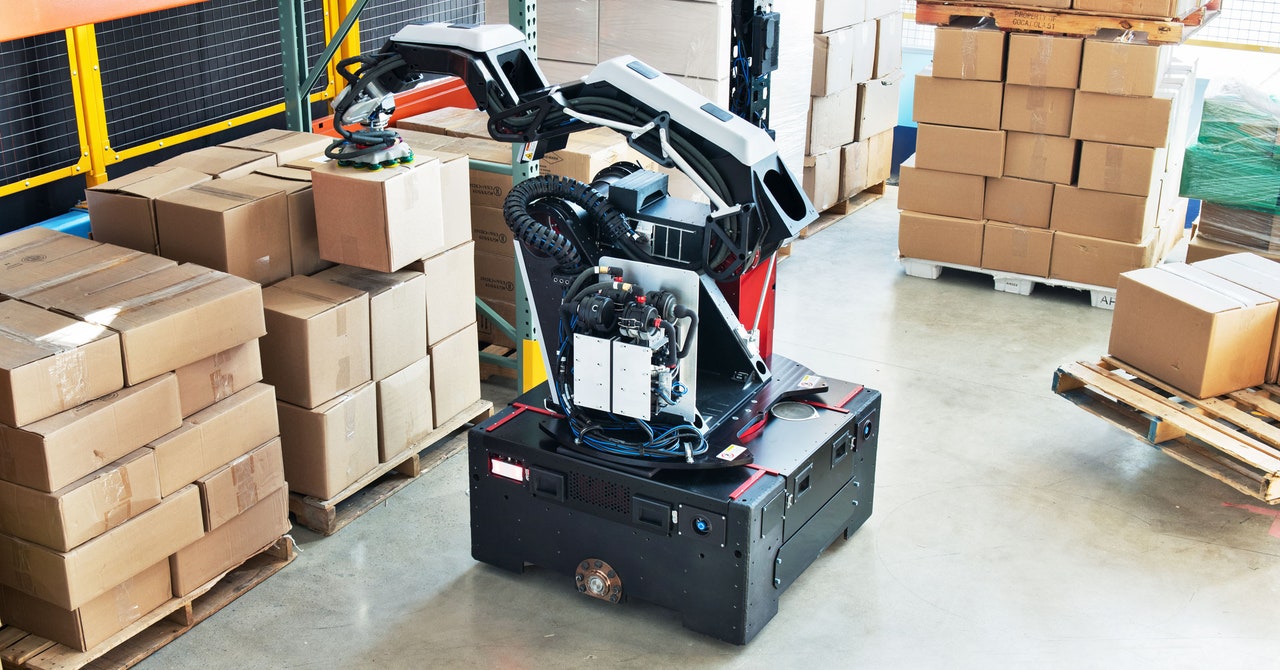
It can’t do back flips like Atlas the humanoid robot, nor can it dance or open doors for its friends, like Spot the robotic dog can. Instead, Boston Dynamics’ new robot, named Stretch, is going straight to work in a warehouse. Rolling around on a wheeled base, it’s basically a large robotic arm that grabs boxes using vacuum power, and it’s designed for tasks like unloading trucks or stacking pallets.
If Spot and Atlas are the show-offs in the family, Stretch is the straight-up workhorse. But while these machines all look and move in wildly different ways, they actually share a lot of DNA. Stretch may seem familiar to you, because it’s a sort of descendant of another machine that debuted a few years back: Handle. That robot had a similar suction arm, but it balanced on two wheels, like a Segway scooter. Handle would grab a box, scoot backward, turn 90 degrees, and roll away to stack the box somewhere else.
It looked neat on video, but in practice the robot needed a lot of room to operate. It could manage unloading boxes from a truck, sure. “But it took a long time,” says Kevin Blankespoor, lead of warehouse robotics at Boston Dynamics. “The truck is a pretty confined space. And so for Handle, every time it grabbed the box, it would need to roll back into some space where it could rotate freely without collisions.”
Video: Boston Dynamics
Which is all to say: If Handle were a human, it’d be let go. So Boston Dynamics pivoted (sorry) to a new form factor for Stretch that slapped a similar robotic vacuum arm on a base with four wheels. Each wheel can move independently, so the robot can shift side to side or forward and backward to orient itself in, say, the back of a truck.
This new base granted Stretch two powers. For one thing, resting on four wheels is a whole lot more energy efficient than trying to constantly balance on two. The same is true for animals: A dog or cat is inherently more stable than a human. (Stretch will get 8 hours of battery life, and clients will have the option to upgrade to a double battery that holds 16 hours of charge.) The second advantage is that Stretch’s arm can now pivot around its base, while Handle had to pivot its whole body to turn.
Video: Boston Dynamics
That arm can lift 50 pounds yet is a quarter the weight of a typical industrial robot arm, Blankespoor says. And oddly enough, this is where it shares the most design DNA with its cousin, Spot the robot dog. “If you take a close look at the wrist joints for Stretch, they’re the same as Spot’s hips,” says Blankespoor. “We use the same electric motors and gearboxes and sensors on those joints across Stretch and Spot, and we use the same software to control the joints.”


